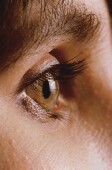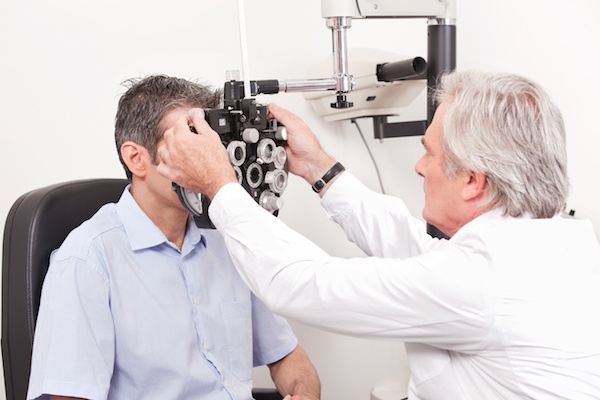
WEDNESDAY, June 23 (HealthDay News) — A new Italian study describes a technique that doctors can use to restore vision to some patients with severe burns to their eyes.
The therapy restores the burned cornea — the outermost layer of the eye — with a graft of healthy stem cells grown in the laboratory.
The treatment “is like putting on a biological contact lens,” said Dr. Stephen Pflugfelder, a practicing corneal specialist and professor of ophthalmology at Baylor College of Medicine in Houston, who says the technique works well.
A clear cornea — essential to good vision — “is the clear window on the eye,” like a watchglass on a watch, added Pflugfelder, who was not involved with the Italian study but is familiar with its findings. The results are published online June 23 in the The New England Journal of Medicine.
In all eyes, the ultra-thin cornea is vulnerable because it doesn’t have much protection. Burns can severely damage the cornea and rob a person of sight. The burns can come from firecrackers, spills of boiling liquid, battery acid, industry chemicals and even eggs that explode into people’s faces when they open the doors of microwaves.
Burns to the cornea from fires are less common, perhaps because burns severe enough to harm the cornea are often fatal, Pflugfelder said.
The prognosis is generally good for patients with minor burns to the cornea. But deeper burns damage the eye’s limbal stem cells — cells with the ability to transform into many types of cells — and can cause severe glaucoma, he said.
With the exception of stem cell treatments, “the patients have almost no alternatives, or very poor alternatives,” said study co-author Graziella Pellegrini, head of the cell therapy unit at the Center for Regenerative Medicine at the University of Modena and Reggio Emilia in Modena, Italy.
Existing treatments for severe burns involve taking stem cells from the patient’s healthy eye, if he or she has one, or from the eyes of a relative or another person. A doctor transfers the stem cells to the burned eye, where they may begin creating new cells that allow the cornea to work properly again.
The treatment described in the study takes a slightly different approach. Researchers coaxed the eye’s limbal stem cells to reproduce in a lab culture before implanting them in the damaged corneas of 112 patients.
“By the time [researchers] put them on the damaged cornea, the stem cells can cover the eye,” Pflugfelder said.
The study reports that the treatment was successful in 76.6 percent of the patients and partially successful in 13.1 percent. (Success was defined as an absence of all symptoms and the permanent restoration of a renewing, transparent cornea.) In 10.3 percent of the patients, the treatment did not work, in part due to surgical complications or the severity of injuries.
About half of those with deep damage to the eye recovered vision, while all of the rest did, Pellegrini said.
A participant in the Italian study described as Patient 93, for example, had such poor vision after an acid burn to his eye that he could only see with it well enough to count his fingers; a graft the researchers developed from limbal stem cells restored normal vision.
A graft of limbal stem cells also restored the corneal surfaces of Patient 24 — who had had severe burns to both eyes — and improved his vision, the study noted.
Interestingly, the procedure was successful in some patients who had been burned years before entering the study. Patients 22, 26 and 46, for example, were nearly blind in one of their eyes, with completely opaque corneas, after suffering alkali burns; they had undergone unsuccessful surgery, respectively, 13, 30, and 3 years before admission to the study. The researchers were able to restore a stable corneal covering to all three, with patients 22 and 46 regaining complete visual acuity, the study reported.
At about $20,000-$30,000, the treatment is relatively inexpensive, Pflugfelder said. It’s not clear how long the treatment will last before it has to be repeated, although some patients in this study did well for as long as 10 years.
Currently, this specific stem cell treatment is not approved for use in the United States, Pflugfelder said, although it is performed in other countries.
More information
For more about the cornea, visit the U.S. National Library of Medicine.

